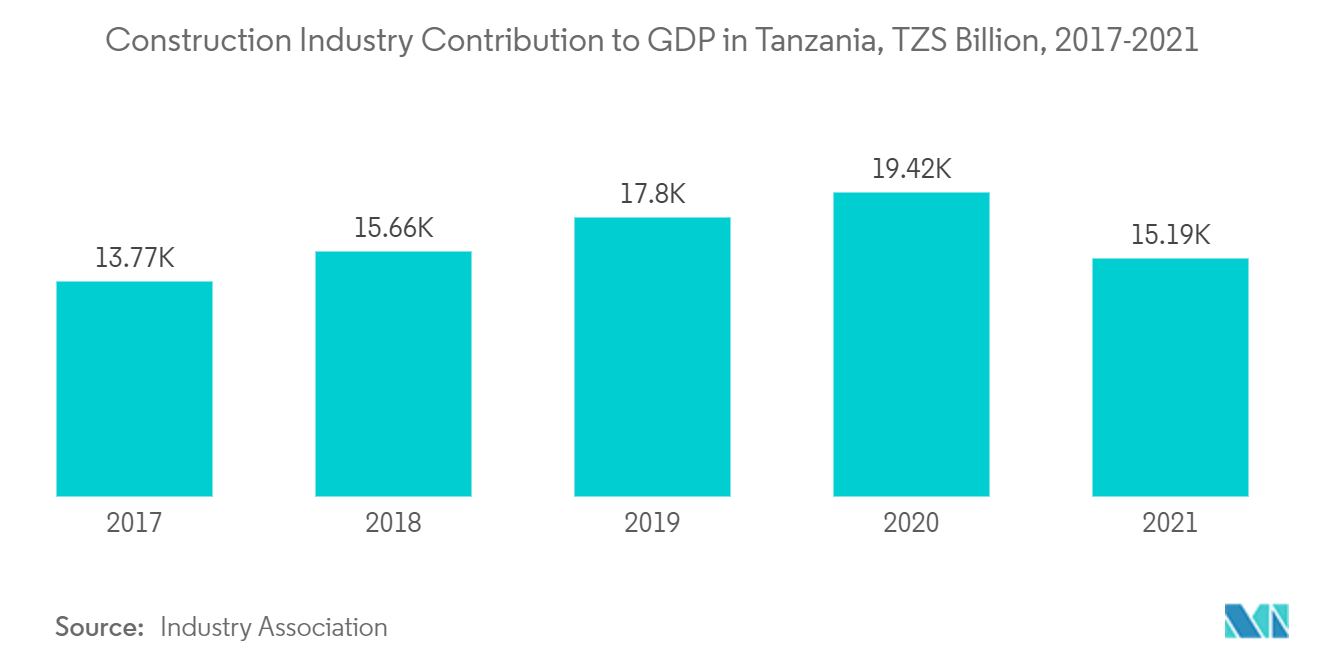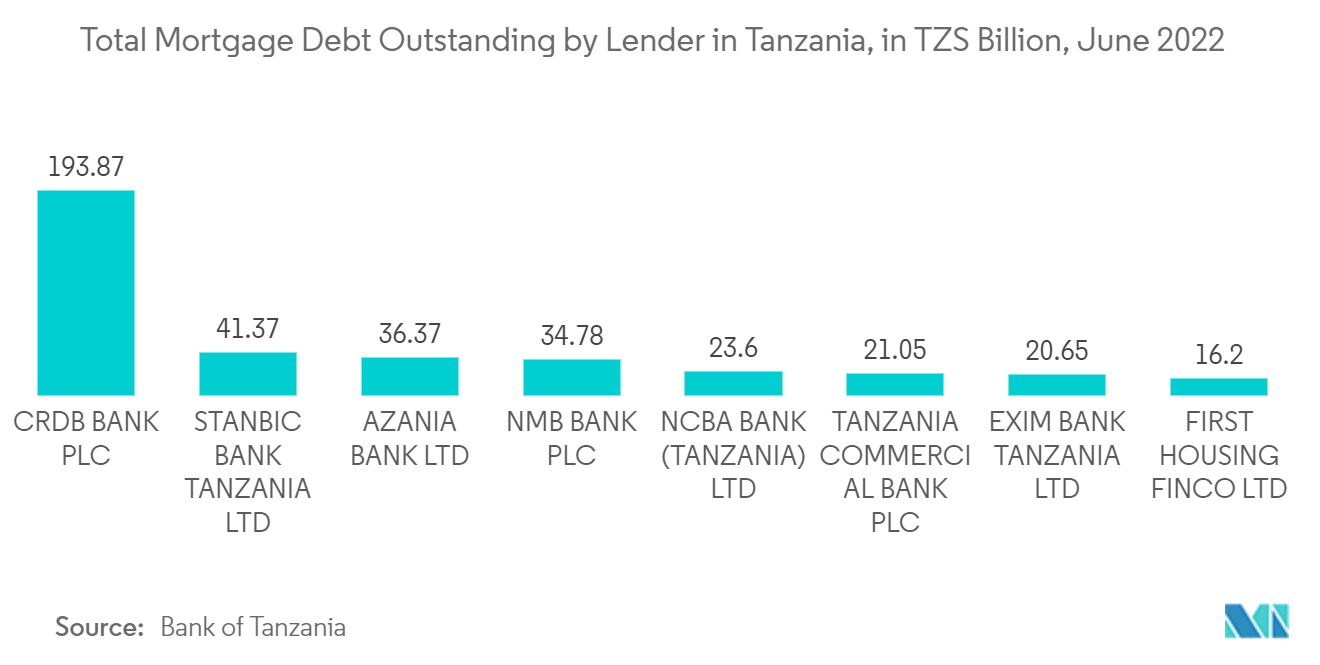Market Trends of Tanzania Construction Industry
Increasing Investment in Infrastructure Projects
Tanzania has started working on a USD 1.9 billion railway infrastructure across the country to improve the country's infrastructure and connect communities. Loans will fund the railway project, and the government has stated that it would neither raise nor impose taxes on citizens to fund it.
The railway is part of a bigger 1,219-kilometer railway network, increasing Tanzanian trade with its neighbors. The railway line will connect Tanzania's Indian Ocean port of Makutopora with Tabora, a port city on the banks of Lake Victoria that Tanzania shares with Uganda and Kenya. Tanzanian President Samia Suluhu Hassan remarked during the project's introduction that the line would be a priority due to its importance in connecting the country to its neighbors.
The Barrick Gold Corporation pledged to invest USD 6 for each ounce of gold sold by its two mines in the nation to enhance access to drinkable water, education, and healthcare in the people nearby. At the same time, it has committed up to USD 70 million for investment in value-adding national initiatives, such as road infrastructure, training programs for those working in the mining industry, and facilities for scientific research at Tanzanian universities.
The Tanzania Ports Authority (TPA) has constructed a facilitation center, and major financial institutions like Tanzania's CRDB Bank, the country's largest bank in terms of assets, have opened subsidiaries there. In a similar vein, the Tanzania Chamber of Commerce, Industry, and Agriculture (TCCIA) recently dispatched a trade and investment mission to Lubumbashi, the second-largest city in the Democratic Republic of the Congo, where they conducted site visits and business discussions to identify key areas of investments and trade.

Affordable Housing is Driving the Residential Segment of the Market
A person's well-being can be significantly impacted by having access to inexpensive housing. The government established the Tanzania Mortgage Refinance Company (TMRC) to combat the issue and broaden the housing finance industry. The TMRC was supported by the creative Tanzania Housing Finance Project, which the IDA funded. This support allowed the TMRC to offer medium- and long-term liquidity to mortgage lenders, making it simpler for them to grant loans to families looking to buy new homes or make improvements to their current homes. Mortgage repayment terms were increased from five years to 25 years, interest rates were lowered from over 21% to 15% annually, and the home finance market's development made loans more accessible. According to estimates, Tanzania needs an additional 200,000 housing units per year, totaling 3 million units, according to Shelter Afrique, a pan-African finance institution.
According to the TMRC, the value of mortgage loans increased by 1.24% during Q2 2022. However, the TMRC's continued availability of long-term capital in the form of refinancing and pre-financing to enable PMLs to match their assets (mortgages) and liabilities remains a crucial factor in the expansion of the mortgage market in Tanzania. The Housing Microfinance Fund (HMFF), another program established under the Housing Finance Project (HFP), aims to offer long-term loans to low-income earners who currently lack access to housing finance for the construction of a home or for home modifications. Collaboration with Habitat for Humanity International to launch a program to expand mortgage loan outreach to the microfinance sector is one of TMRC's other continuing projects for the growth of the mortgage market.
Despite this, 70% of Tanzanian housing is self-built, and many homes are constructed in stages utilizing savings, which has deteriorated the overall quality of houses. The NHC announced that, due to the public's poor purchasing power, it would increase the ratio of rental properties to for-sale homes from 30:70 to 80:20. The NHC intends to achieve this target by expanding its building material manufacturing capacity to facilitate quality construction in the self-build sector and lower the cost of crucial materials for its low-cost house construction.

